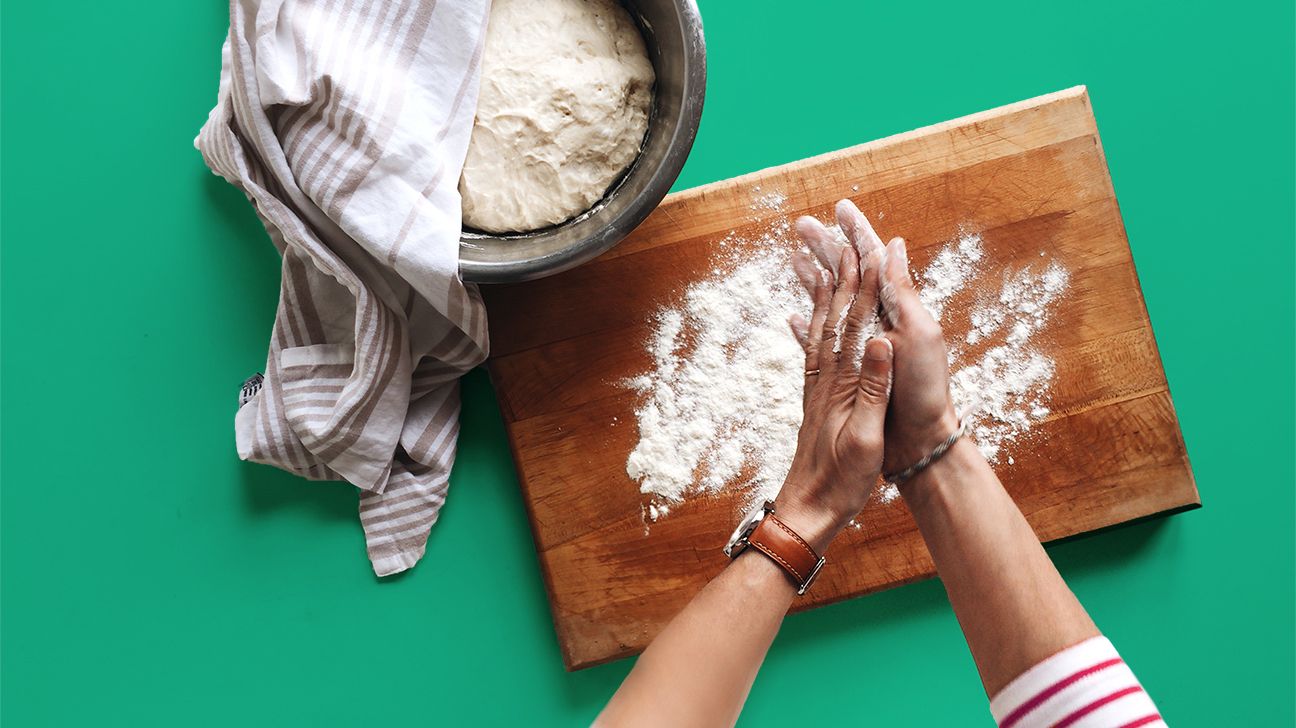If you’re in the middle of mixing up a batch of muffins, can you substitute whole-wheat flour instead of the all-purpose flour that the recipe calls for? The short answer: no. Whole-wheat flour makes your baked goods denser and a lot heavier than those made with just all-purpose flour. You can start by substituting some whole-wheat flour for all-purpose flour, but no more than 25 percent of the total amount unless you’re willing to really sacrifice the texture of your baked goods. Pastries are especially difficult to make if you’re attempting to substitute with whole-wheat flour; pancakes and cookies are a good place to start experimenting.
Baking pros like Rose Levy Beranbaum, author of The Cake Bible and The Pie and Pastry Bible, and Matt Lewis, co-owner of the Baked pastry shops in NYC and Charleston, South Carolina, say that swapping whole-wheat flour for white flour is a bad idea in most baking applications.
Unlike white flour, whole-wheat flour contains wheat bran, which Beranbaum says acts like little knives in your dough. “The bran cuts through the gluten and detracts from the airy texture of the cake or the flaky texture of the pastry, making it dense and pasty and generally undesirable.” Whole-wheat flour will also alter the flavor of your baked goods, leaving them slightly bitter. “I want my cakes to be soft and light and buttery in flavor, not dense and wheaty,” says Beranbaum. “I want my pie crust to be flaky and tender, not cardboardy.”
If you want to beef up your whole-grain consumption, Lewis suggests subbing no more than one-fourth of the white flour that a recipe calls for with whole wheat, and working your way up to a third if it tastes OK. “The white/whole-wheat combo works particularly well in tart crusts and some cookies, but I would refrain from using it in cakes,” he says.
Bread is the best place to use whole-wheat flour, says Beranbaum. She offers the following tips for working whole-wheat flour into your breads:
- You can replace white flour with whole-wheat flour cup for cup. For every cup you exchange, add five teaspoons of water. Add additional flour only when needed while shaping.
- If you are making bread with 100 percent whole-wheat flour, add two teaspoons of vital wheat gluten per cup to create a stronger structure and higher rise. For each teaspoon of wheat gluten you use, add another one and a quarter teaspoons of water.
- If using 100 percent whole-wheat flour, allow the dough to rise in volume by just one and a half times, as opposed to the typical two times.
Try some of our favorite recipes featuring whole-wheat flour:
1. Whole-Wheat Pizza Dough
Pizza dough is a great way to sneak some whole-wheat flour into your routine. One cup of whole-wheat flour with 2 cups of all-purpose flour makes for a chewy and nutty whole-wheat crust that crisps beautifully in the oven. Get our Whole-Wheat Pizza Dough recipe.
2. Metropolitan Granola Cookies
Whole-wheat flour, oats, and granola add a ton of texture to this fantastic cookie recipe from Metropolitan Bakery’s James Barrett. Serve with some vanilla ice cream or a glass of milk and you’re all set for a perfectly simple and (fairly) wholesome dessert. Get our Metropolitan Granola Cookies recipe.
3. Honey-Whole-Wheat Dinner Rolls
These whole-wheat rolls are a welcome change from the all-white flour dinner rolls of years past. Honey adds a hint of sweetness and the wheat germ (or old fashioned oats) on the top add a rustic touch. Get our Honey-Whole-Wheat Dinner Rolls recipe.
4. Healthy Banana Muffins
These whole-wheat muffins are a great way to start the day, sweetened with a little bit of maple syrup and honey. Make a big batch and freeze them so that you’ll have breakfast throughout the week – reheat in the toaster oven and serve with some fruit preserves. Get our Healthy Banana Muffins recipe.
5. Whole-Wheat Sables
Adding whole-wheat flour to sables makes them a sturdier, nuttier cookie that tastes fantastic dipped in a cup of hot tea. You can adapt this recipe and add all sorts of nuts, dried fruit, and chocolate, and you can even experiment with different types of flour. Get our Whole-Wheat Sables recipe.
6. Almond-Whole-Wheat Blueberry Muffins
A streusel topping makes this a delightful special occasion muffin recipe. You can use fresh or frozen blueberries, and slivered almonds add a great texture to the mix. You can substitute any type of berry that’s available, or try changing the almonds to toasted walnuts to kick things up a notch. Get our Almond-Whole-Wheat Blueberry Muffins recipe.
7. Whole-Wheat Pita Bread
This whole-wheat pita bread is the real deal. You can bake it in the oven on a flat sheet-pan or pizza stone, and it tastes amazing paired with some fresh hummus or labneh. Whole-wheat pitas are heartier and more filling than their white flour brethren, and pair particularly well with the nutty flavor of tabouli and couscous. Get our Whole-Wheat Pita Bread recipe.

